From Dec. 14, 2021 to March 20, 2022, it will be possible to see some previously unpublished drawings by Pontormo (Jacopo Carucci; Pontorme di Empoli, 1494 - Florence, 1556), which are part of the artist’s fund of masterpieces preserved at theCentral Institute for Graphics in Rome. The exhibition, entitled Di mano di Jacopo da Puntorme. Drawings by Jacopo da Pontorme in the Collections of the Central Institute for Graphics, is being held at the Institute’s headquarters, in the Sala Dante, inside the Palazzo della Calcografia (Via Poli, 54), behind the Trevi Fountain. This group of masterpieces, seldom seen even by specialists because the inherent fragility of these artifacts has always discouraged their loan, reveals the artist’s most intimate creative activity.
This is a very important nucleus of drawings, almost all of them double-sided, which go on display for a once-in-a-lifetime event over the next ten years and perhaps beyond, but which constitutes a moment of special reflection for all, especially because it is a nucleus of drawings fresh from the artist’s operations at work, a kind of personal workshop archive whose importance in all these years had escaped experts in Pontormo’s art.
With the exception of one of the sheets, purchased by the Gabinetto Nazionale delle stampe in 1913, all of the drawings come from the prestigious Corsini collection, once at Palazzo Corsini alla Lungara (now the Corsini Gallery); the Corsini Library (where drawings and prints were customarily kept glued in volumes) was donated by Pope Clement XII to his nephew Neri Maria in 1733 and expanded for more than a century by the family’s descendants. In 1883 Prince Tommaso Corsini donated it to the Accademia dei Lincei, and in 1895, thanks to the interest of the art historian Adolfo Venturi, a substantial part of the volumes containing the drawings and prints went to form the original nucleus of the Gabinetto Nazionale delle Stampe, established in 1895 for the conservation and study of graphic works. And it was from the union of the Gabinetto Nazionale delle Stampe and the Calcografia Nazionale di eredità pontificia that in 1975 the Istituto Nazionale per la Grafica was born, which since 2014 has become “central” following the Franceschini reform.
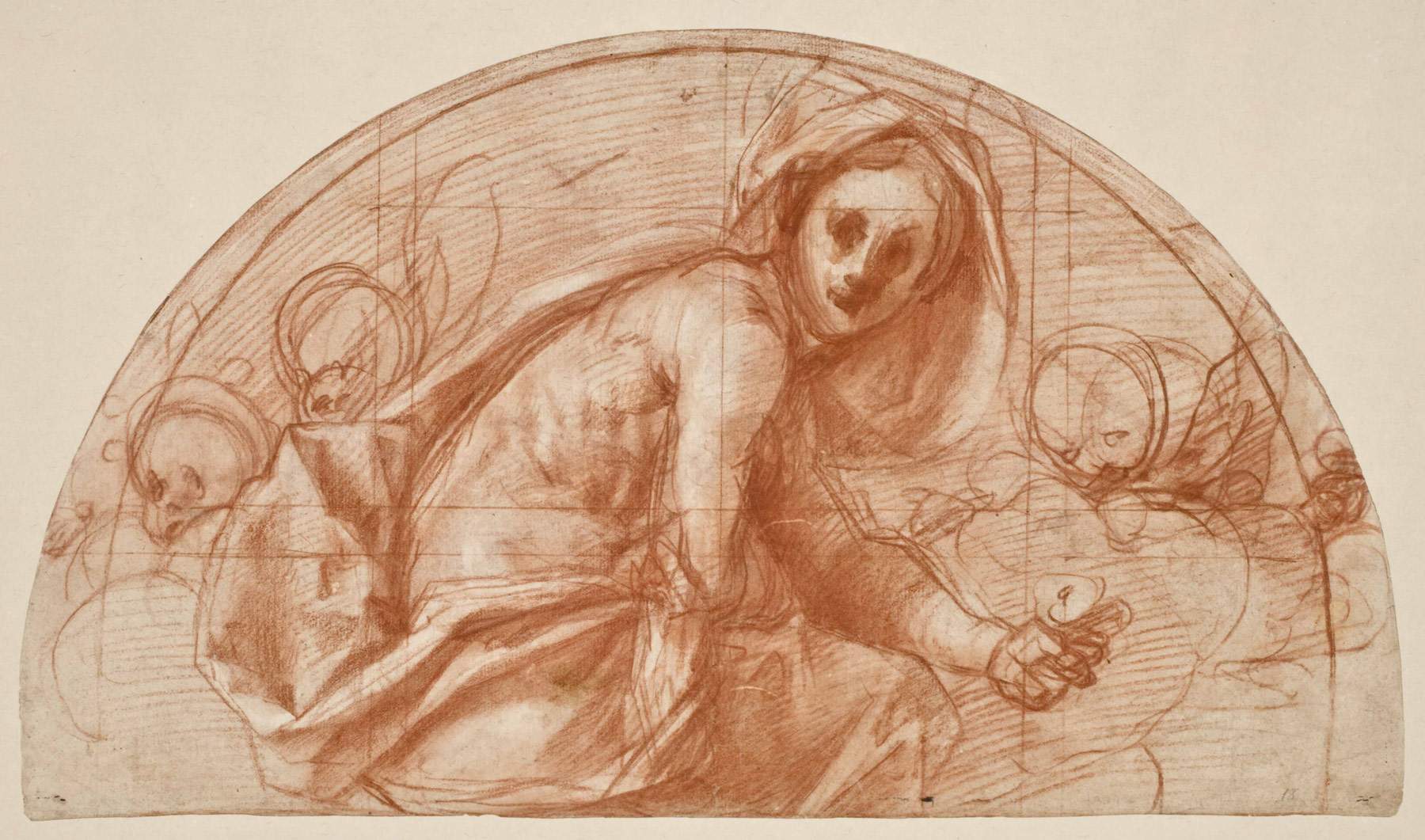
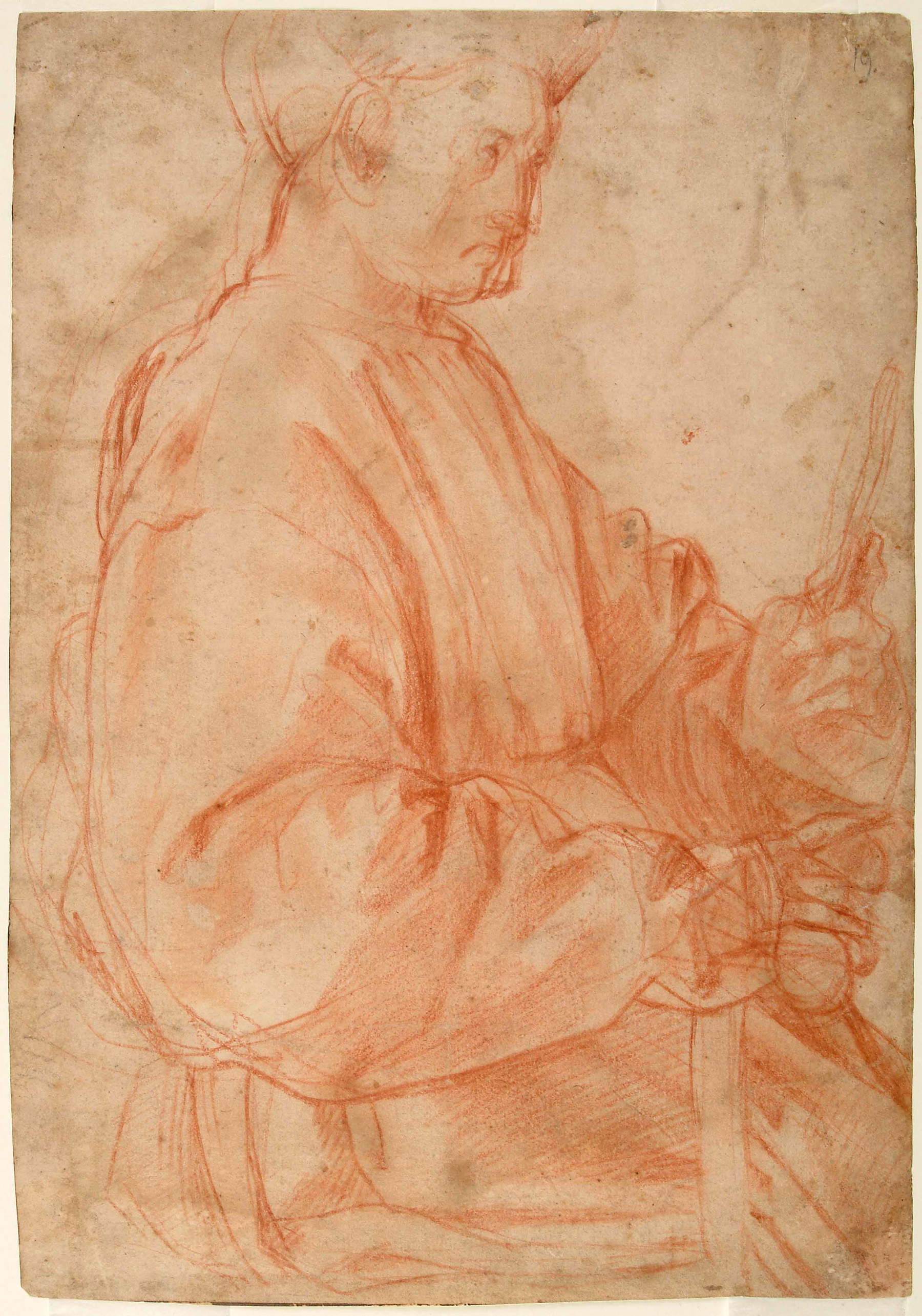
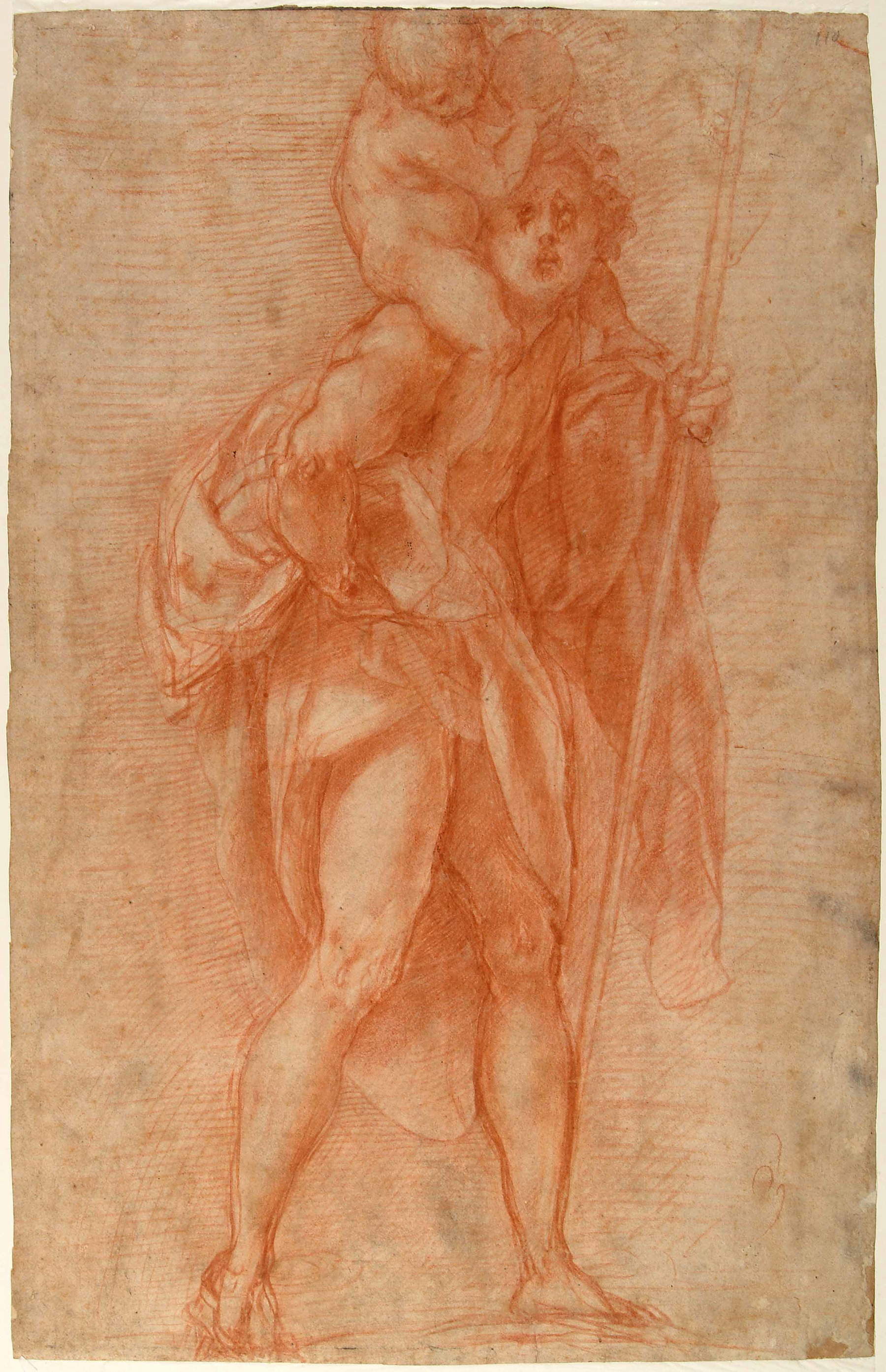
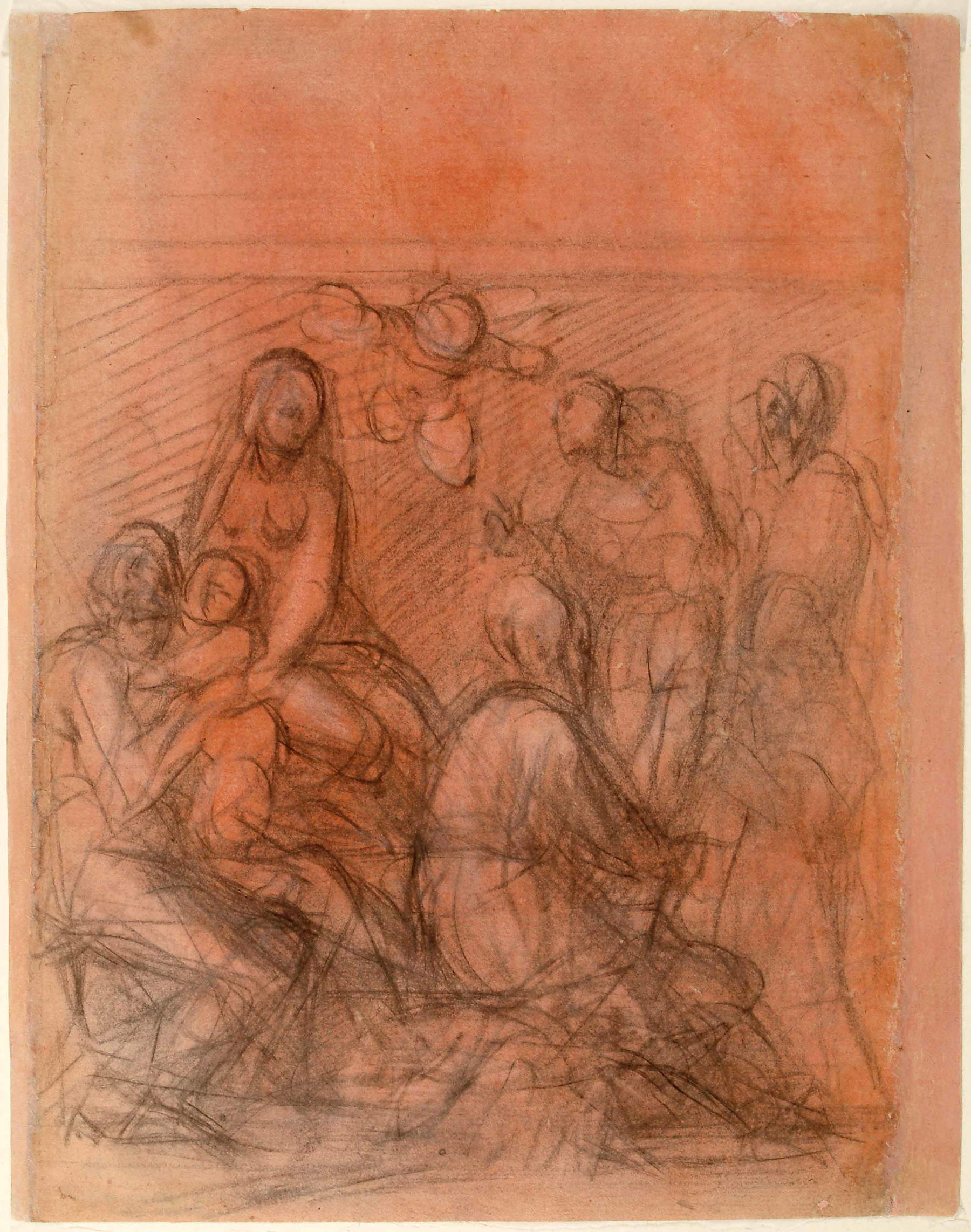
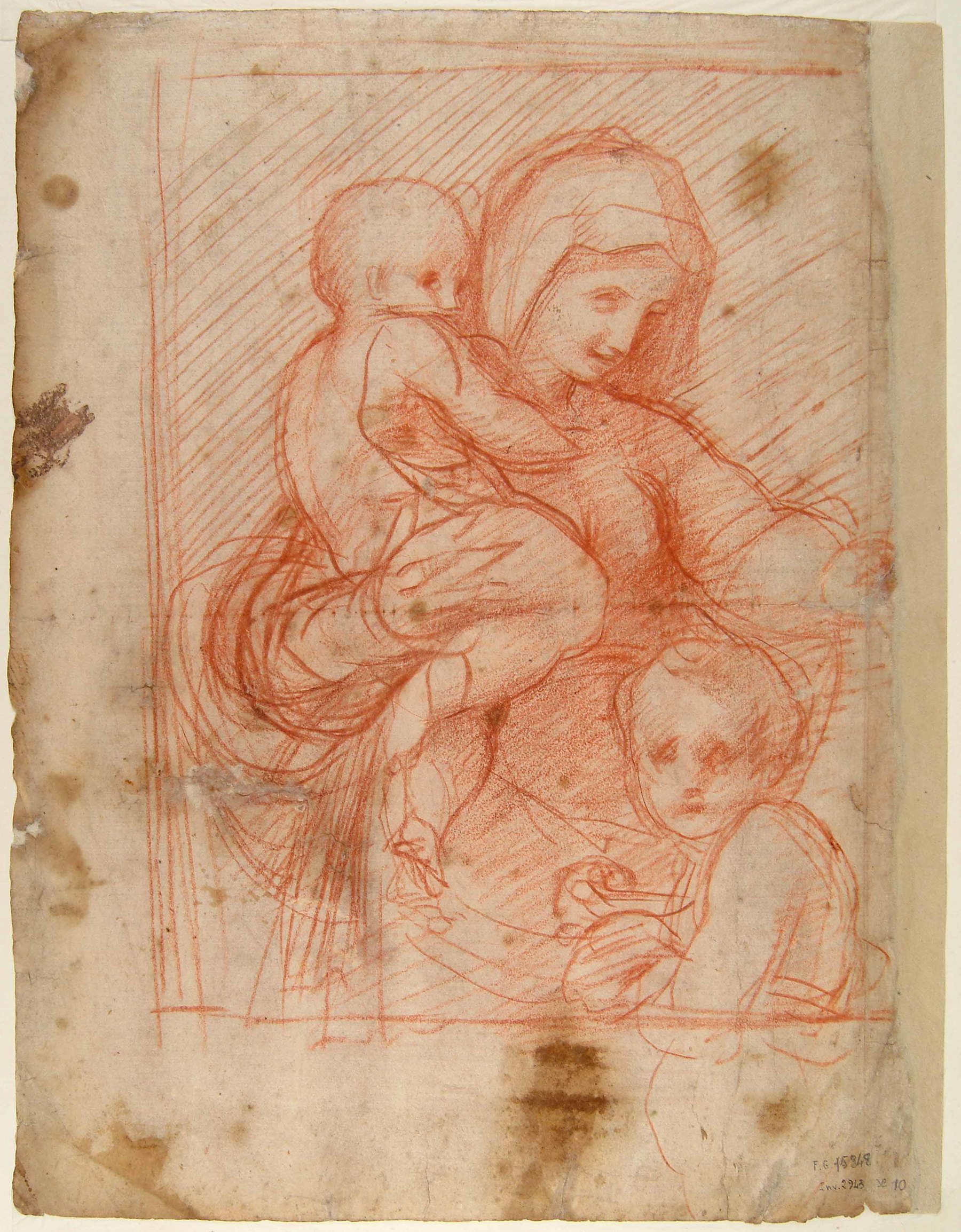
Curated by Mario Scalini (ICG Director), Alessandro Cecchi (Director of Casa Buonarroti in Florence) and Giorgio Marini (Head of the Gabinetto Disegni e Stampe dell’ICG), the exhibition features all 29 sheets with Pontormo’s drawings owned by the ICG, whose technique of execution is mainly “sanguigna,” sometimes used in combination with “black stone” or “chalk highlights.” Of about half of these sheets, the drawings on the verso, which show figure studies, are also displayed in facsimiles (for reasons of fragility, since the sheets are in fact so thin that they cannot tolerate vertical display). The facsimiles are mounted in passepartouts and framed. In total, between the originals displayed in the showcases (recto) and the facsimiles on the verso on the walls, there are 47 works by Pontormo on display, and as many as 23 of these are referable to the so-called Taccuino Corsini, of which the exhibition proposes a philological reconstruction.
Also evident on one side of the sheets are the so-called ’stations’ for stitching the pages into a single whole. These are mainly studies for figures, thus a repertoire of images, first ideas, studies from life (or even preparatory studies: for example for the Pala Pucci of San Michele Visdomini in Florence) to be used as needed. These sheets are small in size (about 210x150 millimeters). Other loose sheets of great quality, on the other hand, refer to studies for compositions that were never realized, such as the Saint Christopher for example, the guiding image of the exhibition, the study for the Lunette with Saint Cecilia or the studies for the Portrait of Piero de Medici. For the occasion, the exhibition catalog is produced by Allemandi Editore.
Finally, it should be noted that, with the aim of bearing witness to the extraordinary nature of the works, the Central Institute for Graphics has signed an agreement with the company Centrica, a private entity with which the Pinacoteca di Brera and the Galleria degli Uffizi already collaborate, in order to make visible online and in very high definition, in minute detail, all the pieces that the Institute has and on which the entire criticism converges regarding authenticity.
The exhibition opens Tuesday through Sunday from 10 a.m. to 6 p.m. (last admission 5:45 p.m.). Special closure Dec. 25 and Jan. 1 Tickets: full price € 11.00; reduced € 2.00 (for students aged 18 to 25), free for convention members. For info go to the Central Institute for Graphics website.
 |
| In Rome exhibition of unpublished drawings by Pontormo at the Istituto Centrale per la Grafica |
Warning: the translation into English of the original Italian article was created using automatic tools. We undertake to review all articles, but we do not guarantee the total absence of inaccuracies in the translation due to the program. You can find the original by clicking on the ITA button. If you find any mistake,please contact us.